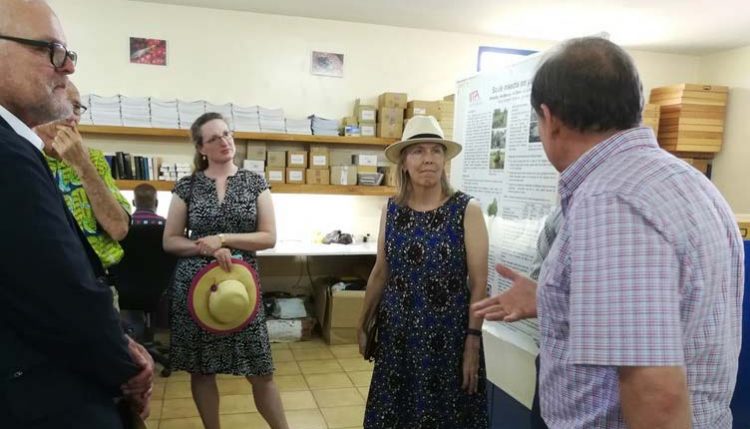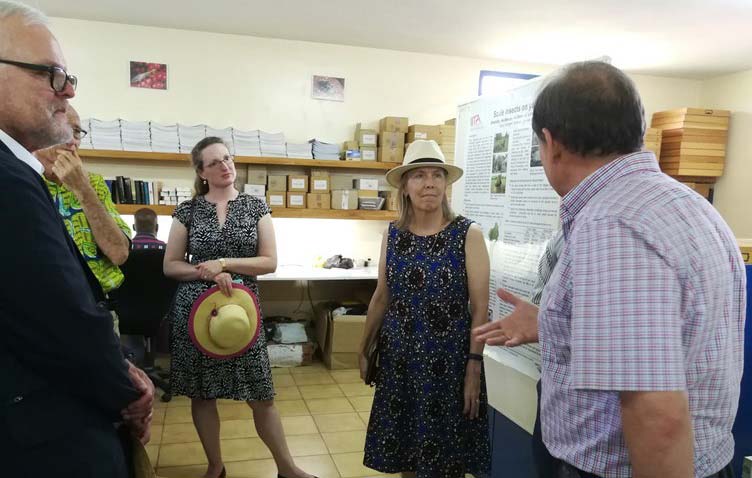
US Ambassador to Benin visits IITA to learn more about the fall armyworm and the biodiversity center
On 7 May, the US Ambassador to Benin, H.E. Lucy Tamlyn, visited the IITA-Benin station accompanied by the US Embassy Political and Economic Section Chief Marisa N. Cohrs and USAID-Benin General Development Officer Geoffrey Minott. The main reason for this courtesy visit was to understand the progress towards the control of the invasive and highly destructive fall armyworm Spodoptera frugiperda, see IITA’s arthropod collection, get acquainted with activities in the Agro-Eco-Health section, and learn about the USAID Feed the Future Legume Innovation Lab collaborative work in cowpea IPM with Michigan State University (MSU).

US Ambassador H.E. Lucy Tamlyn (2nd from right) with IITA Biodiversity Center curator Georg Goergen, and US Embassy Political and Economic Section Chief Marisa N. Cohrs, IITA Emeritus Scientist Peter Neuenschwander, and USAID-Benin General Development Officer Geoffrey Minott.
The attention of the US Ambassador was spurred by reports from USAID officers who participated in the USAID co-funded workshop on fall armyworm held on 13-15 February at the IITA-Benin campus near Cotonou, Benin. The Ambassador was met by Manuele Tamò, IITA-Benin Country representative, who briefly introduced IITA in general, and activities at the Benin station in particular, which now also include the Clearinghouse of the Technologies for African Agricultural Transformation (TAAT), and sister institutions such as AfricaRice, WorldVeg, Bioversity International, CIRAD, Access Agriculture, the GIZ Green Innovation Center, and East- West Seed.
Georg Goergen presented on the activities of the biodiversity center and its arthropod collection, and highlighted the need for increased biodiversity studies for early interception of new invasive species as had been the case for the fall armyworm, which was identified by IITA. Ghislain Tepa-Yotto showed the visitors the rearing facilities, where the fall armyworm and its natural enemies are presently reared under strict hygienic conditions. Djouaka Rousseau led the delegation on a tour of the Agro-Eco-Health platform labs, emphasizing the importance of monitoring insecticide residues in maize as more and more farmers resort to using inappropriate and harmful pesticides to fight the fall armyworm. The collaborative work on cowpea IPM was presented by Manuele Tamò, who detailed the efforts undertaken so far in developing and deploying biological control agents and biopesticides, and highlighted the excellent collaboration with MSU through the USAID grant.
In her final remarks, the Ambassador expressed her admiration for the work conducted at the Benin station, and was happy to note that US Government funds had gone a long way in providing alternatives to chemical pesticides.
